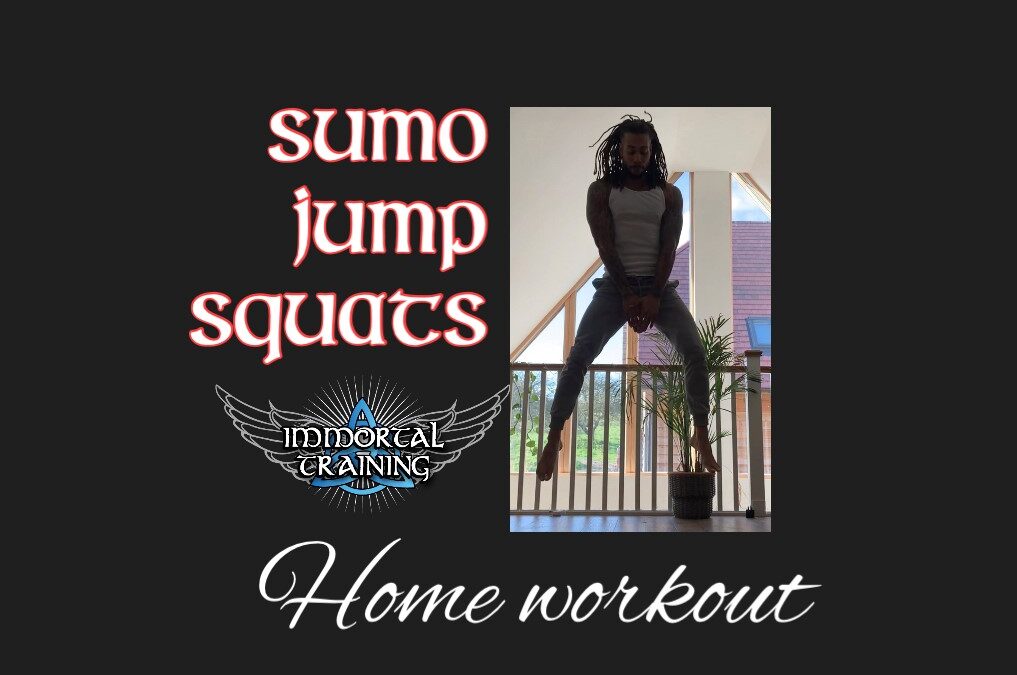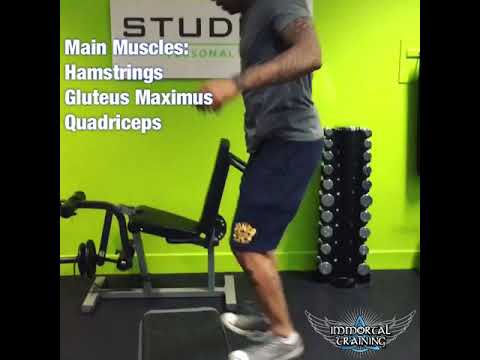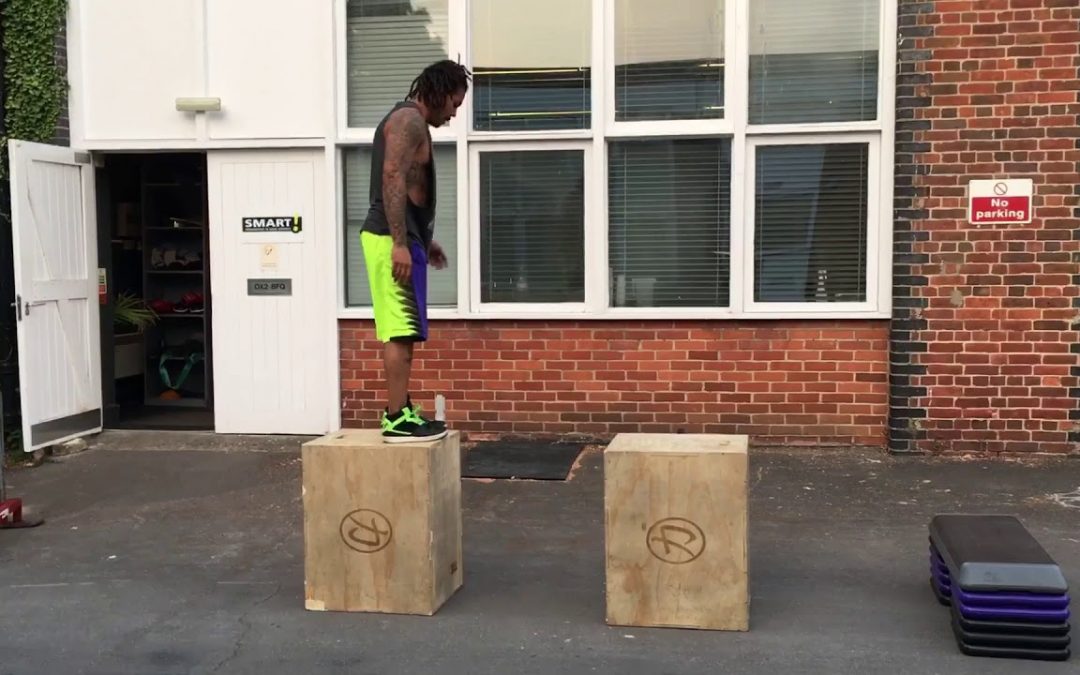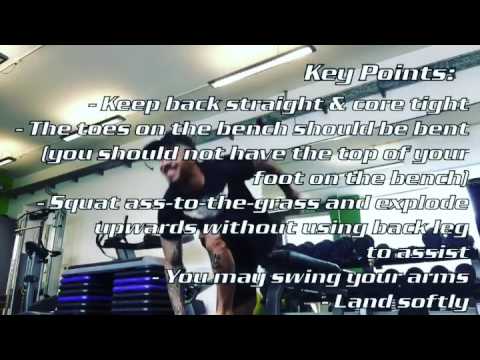
Sumo Jump Squats
Sumo Jump Squats are great for advanced gym goers that are looking to increase their vertical jump by building explosive leg power.

Sumo Jump Squats are great for advanced gym goers that are looking to increase their vertical jump by building explosive leg power.

Plyometrics involves the training of the muscles in a way as to exert maximum force with the objective of increasing power. In physics terms, power = strength x time/distance, but in order to simplify the meaning, power is the combination of speed and strength. Jumping is a form of plyometrics exercise and that’s what we are going to focus on in this workout.
I won’t bore you myself, but if you would like to learn more about the science of plyometrics/power training then check out this article: https://www.brianmac.co.uk/plymo.htm
For now, let’s just stick to the agenda, which is a hardcore home workout for legs using plyometrics with kettle bells, or dumbbells.
Go here for my recommended warm-ups: https://youtu.be/JFdvISOXmY4
SUPER SET 1:
SUPER SET 2:
BURNOUT:
GOOD LUCK!


Load-to-Explode
Load-to-explode box jumps are not only extremely effective for increasing your vertical jump and leg power, but also for transforming and/or developing fast-twitch muscle fibers, which are needed in order to maximize muscle mass. Ladies, if you’re looking for some top secret bootybuilding shizzle then like and follow. No questions assed.
Up until the late 20th century, the vast majority of documented research into muscles and movement was done in a static environment using cadavers. Apparently, people had no common sense back then lol. Nowadays, we have a much better understanding of how the body works. Before any contraction there is an eccentric loading of the muscle that can be seen when bending your knees to jump, or when twisting your body left to swing a tending racket to your right.
Dropping from an elevated surface and then jumping, increases the load on the muscles in comparison to jumping straight up from the floor. The increased eccentric load will cause the muscles to explode with a bigger bang, which will increase your vertical jump.
Personally, I train legs for power (not strength), mass, functional ability and mobility. Power has helped increase mass, but never the other way around. On the flip side, power DOES increase strength and speed. However you can easily reverse the effects by not performing the exercises properly.
To prevent LOSING power, (1) NEVER use a weight heavy enough to turn the movement into a static one instead of an explosive one (keep it light); (2) NEVER do more than 8 repetitions per set, or continue a set once the explosiveness of your muscles has died out (whichever comes first); (3) rest for at least 90 seconds; and (4) only work power exercises into the very end of your program (the last one, or two exercises).
✌🏾
Tay

For an extensive understanding of muscle fiber activation go here: https://www.ncbi.nlm.nih.gov/m/pubmed/21912291/
Sprinters, wrestlers, high jumpers, footballers, football players, basketball players, martial artists, rugby players… hit this up! You can increase leg power quickly with this exercise.
To add to the key points…
It is important to recognise when you are losing power during each set. You don’t want to push yourself to extreme fatigue. If you do you will be defeating the purpose. Staying in the anaerobic system, so that you are only recruiting fast-twitch muscle fibres is a must!
To effectively work this into a routine, save it for the very end and never do more than 8 reps (as for any power exercise). Using extra resistance isn’t necessary, but if you do, use very little, and make sure that you don’t hit muscle failure!
Please subscribe!
Tay Gabbidon
Personal Trainer & Nutrition Therapist
Oxford, England
Recent Comments